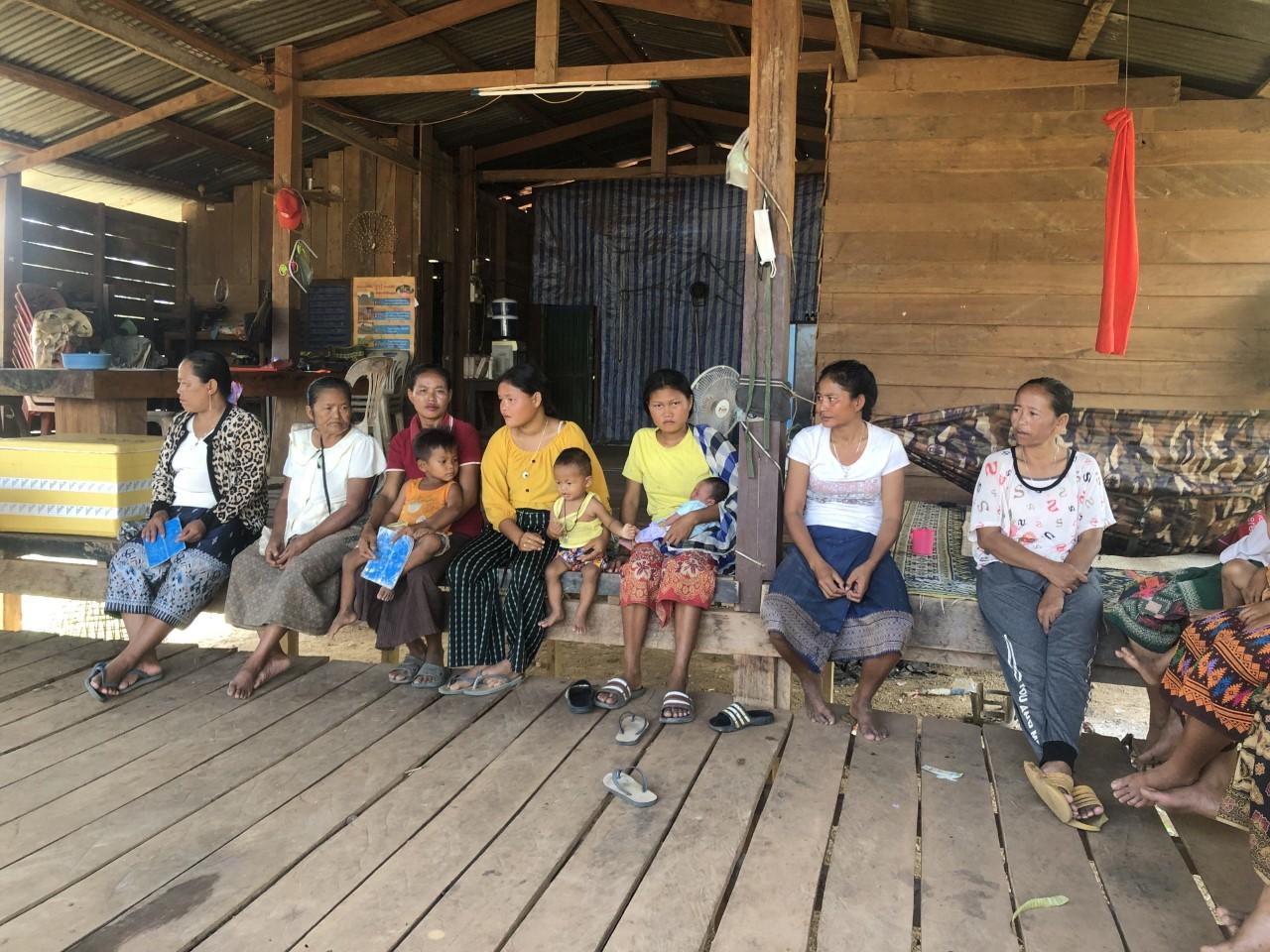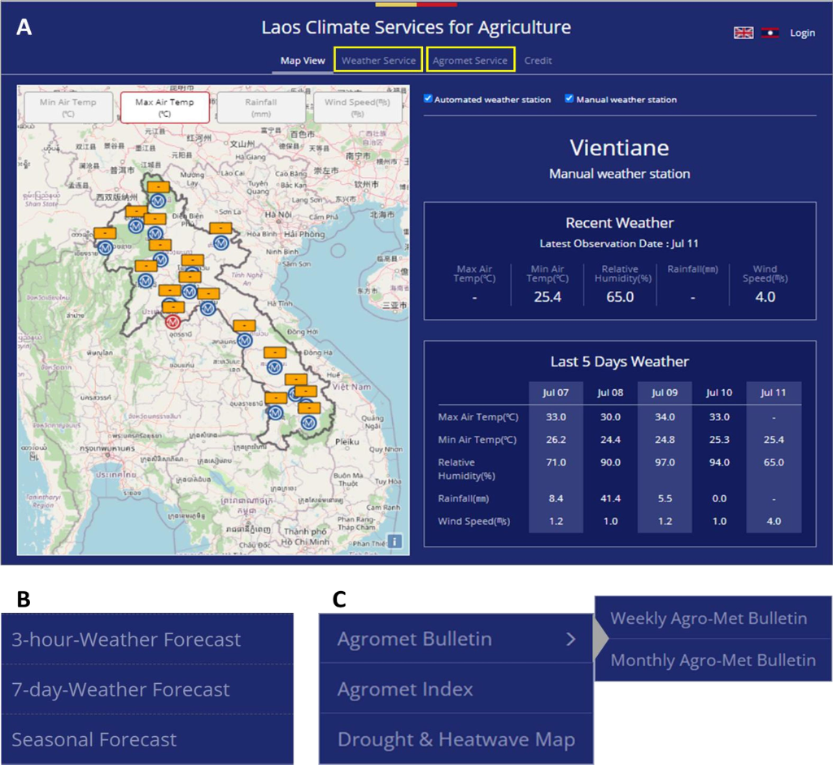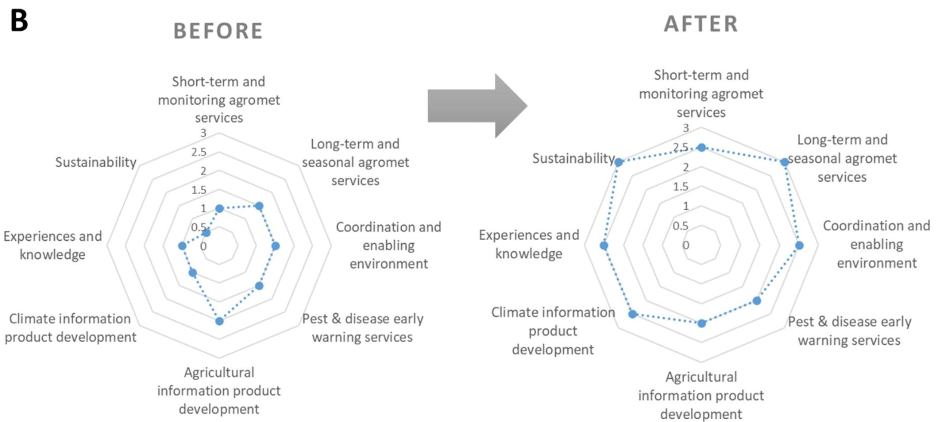Research Articles Probing sustainable agromet services and outcomes on agriculture in Laos

In pursuit of adapting to climate change, climate services for agriculture are being introduced to local farmers for improved productivity and yields. A recent case study on climate services for agriculture in Laos highlighted the results of having an ICT-based service platform and notable changes in agrometeorological service capacities.
Climate change is here to stay, and so is its impact on the agricultural sector. Studies show that consequences of 1 degree C rise in the global temperatures can affect the crop yield in some countries. Crop revenue can drop as much as 90% in 2100, which will drastically affect small-scale farmers in the near future. Moreover, climate change will weaken farm production in developing countries and regions.
To adapt to these changes, localized climate services for agriculture are paving the way to help farmers access the information and tools they need for better agricultural production.
A new case study explores how these climate services have been applied to agriculture in Laos. As part of the DeRISK Southeast Asia project, Alliance of Bioversity and CIAT researchers examined the use of a top-down, multidisciplinary platform based on information and communication technology (ICT) for agrometeorological (agromet) services to facilitate institutional coordination and make sure the project is sustainable. DeRISK linked up with the Strengthening Agro-climatic Monitoring and Information Systems, or SAMIS, project of the Food and Agriculture Organization (FAO), that focuses on building the adaptive capacity of Laos by ‘combining the agricultural and meteorological sectors for the development of critical agrometeorological services,’ to scale this project out to stakeholders.
The Laos Climate Services for Agriculture (LaCSA) operates under DeRISK and SAMIS and is used to systematically engage the relevant institutional partners in the co-creation of agromet services. It also demonstrates how ICT can play a critical role in creating the essential two-way connection between the meteorological and agricultural sectors, where local government officials and farmers can benefit.

A screen capture showing the main webpage of the Laos Climate Services for Agriculture (LaCSA). Credit: Kim et al., 2022
LaCSA consists of a database that provides information about the weather, climate, and agromet. It links the collected the information and moves it to the service portal for generation and agromet services. After analyzing and calculating the given data, LaCSA generates and delivers corresponding services to various users. These services include management recommendations for crops, crop-specific indices, and crop yield forecasts for improved planning and decision-making.
Leo Kris Palao, Laos Country Coordinator for DeRISK and study co-author, explains that an advantage of using an ICT-based platform is that it allows different government agencies and actors to coordinate the information supply chain and sustain the co-development process in updating agricultural recommendations for dissemination.
Farmers who have good access to ICT services receive timely information from LaCSA. Although the use of technology is a main tool in providing top-down agromet services, the resources were still able to reach the farmers through informal channels like village loudspeakers, radio, farmer field schools, and school posters., TV, website, phone application, and social media.
Results from surveys and focus groups indicate that there was an increase in agromet service capacities before and after LaCSA was implemented, particularly in climate information product development, knowledge and experiences related to service production, and sustainability.

A radar graph showing the changes in agromet service capacities based on the estimated scores of eight key elements. Credit: Kim et al., 2022
The case study also found significant key lessons, including co-training for the agricultural and meteorological sectors, easy-to-use data management processes, early buy-in for policymakers, and creating standard operating procedures for staff time and budgets. Essentially, these suggestions can also be adopted by other developing countries, where agromet services are found to be experiencing constraints.
Overall, through catalyzing data sharing, the use of IT tools, and policy development from both the agricultural and meteorological sectors, LaCSA successfully enabled the co-creation of agromet services in Laos, and at large, promotes resilience to climate risks.
“Many climate services platforms have failed in bridging climate information, decision-makers, and end users because of the lack of institutional and sectoral arrangements, as well as the governance structure to operationalize the system,” says Palao. He adds that knowledge sharing among agriculture and hydrometeorological ministries allowed them to further tailor climate information for agriculture.
Palao also recognizes that through institutional arrangements at the national level, the synergies formed facilitated a coordinated implementation of activities that mobilized local stakeholders.
Reaching ‘the last mile’ is not the end of the journey
After its third anniversary of implementation, LaCSA has already been introduced to more than 110.000 farmers in Laos. The ICT-based service platform has been shared with farmers' groups, loudspeakers, and school posters.
However, addressing ‘the last mile’ barriers should not stop here. Instead, this is an ongoing journey of going back and forth, meaning assessing and reassessing must always be included as the final step.
Palao is optimistic that through the learnings from the DeRISK and FAO-SAMIS in engaging critical stakeholders at the national and local level, the Alliance is able to engage further in developing a scalable climate services platform to support climate resilience in Asia.
“The sectoral arrangements, bottom-up approach, and inclusive dissemination strategies are just among the key takeaways that the Alliance learned, which can be leveraged in developing inclusive, relevant, and transparent systems for climate services,” he says.
